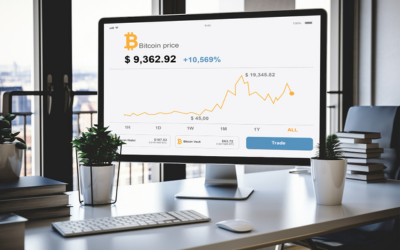What is Crypto Spot Trading?
Spot trading in crypto is the act of buying and selling digital currencies and tokens at current market values. The idea is to acquire at existing market prices and then sell at a higher market price to create a trading profit.
Unlike margin or futures trading, where traders wager on the upward or downward movement of cryptocurrency values, spot trading enables traders to purchase and sell the real cryptocurrencies, offering ownership to buyers.
Having said that, spot trading shouldn’t be mistaken with investing or HODLing, since the purpose of a spot trader is to generate profits in the short term by continuously buying and selling cryptocurrencies to capitalize on market swings.
How Spot Trading Works?
The easiest approach to participate in spot trading is to utilize a centralized exchange (CEX) or a decentralized exchange (DEX) to make the deal. CEXs frequently come with an easier experience than DEXs, which makes them enticing to novices.
Spot trading enables you to purchase cryptocurrencies, such as Bitcoin (BTC) and Ether (ETH), using your local currencies or trade across various cryptocurrency trading pairings.
To trade crypto on the spot market, pick an exchange and set up an account. For this example, we picked the centralized exchange, Binance.
You will next need to deposit fiat cash or move crypto from another wallet to the exchange. Then, pick the cryptocurrency pair you wish to trade.
Select your chosen order type amongst market, limit, and stop limit. In this example, we are utilizing the BTC/USDC trading pair.
Enter the amount you wish to exchange, and then click ‘buy’ crypto.
Finally, your purchase order will be executed as soon as it matches with a sell order in the orderbook, and you will get your BTC in your exchange account. Conversely, if you make a market order, your order will be completed within seconds, and the deal settles practically instantaneously.
Pro and Cons of Spot Trading
Pro:
- Coin ownership: Spot trading allows you to own the digital assets you acquire, which you may use for numerous reasons, including as for collateral to borrow other crypto assets or earn interest in decentralized lending pools.
- Simple to use: Spot trading is quite basic, particularly for those new to trading.
- Less risky: It’s less dangerous than margin and futures trading, which means your losses are confined to the amount you put in.
- More crypto options: Generally, there are more cryptocurrencies supported for spot trading than margin trading on cryptocurrency exchanges.
Cons:
- Limited profits: Spot trading doesn’t provide leverage, which means you need to spend your cash, which might limit possible gains (but also losses).
- Fees: Spot trading might entail numerous costs, including trading, withdrawal, and network fees for trading cryptocurrencies that can effect your total profitability.
Difference between Spot Trading and Margin Trading
The key difference between crypto spot trading and margin trading is that although you will require cash for spot trading, the latter permits you to borrow money for your transactions with the use of leverage.
But that’s not all. Here are some of the fundamental distinctions between crypto spot trading and margin trading.
| Crypto Spot Trading | Crypto Margin Trading |
Asset Ownership | Allows you to Buy and Sell the Crypto in actual. | Crypto is not Owned but rather bets on its price change. |
Leverage | Doesn’t use leverage for trading but instead requires capital funding in actual which limits potential gains. | Allows you to borrow from the exchange to increase your trading position so that you can trade in large amounts with less capital. |
Simplicity | Straightforward, suitable for beginners and those with lesser knowledge of crypto trading or complex approaches. | Much more complex, involves considerations, monitoring of margin levels and understanding of liquidation risks. |
Risk | No borrowing, No Risk. | Use of Leverage increases the Risk of greater losses just as it increases the potential gains. |
Short-Selling | Bought at current market prices and cannot gain from short-selling. | Can be profited from a decline in price of crypto by selling it first and then buying back at a lower price. |
Spot crypto trading is a simple method to engage in cryptocurrency trading. However, like any other investing or trading technique, there are still dangers involved, and you might possibly lose all of your funds. Finally, it’s vital to investigate the cryptocurrency you are purchasing and only trade what you can afford to lose.




